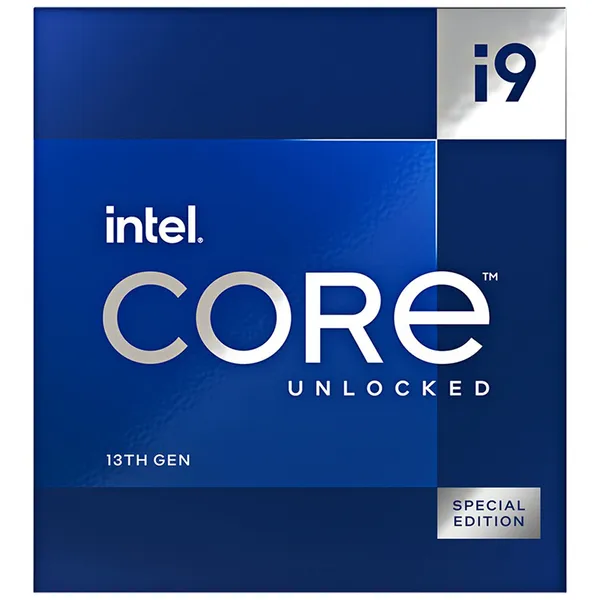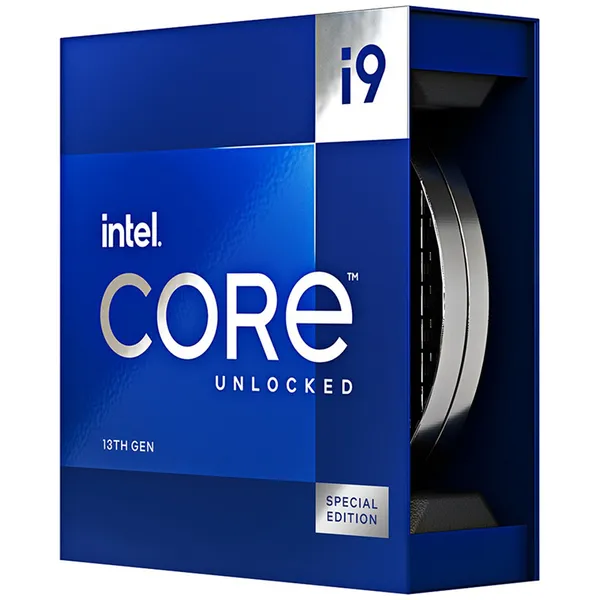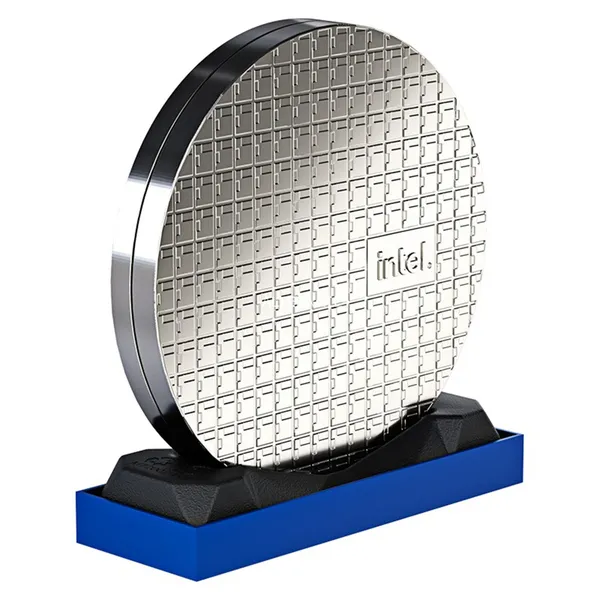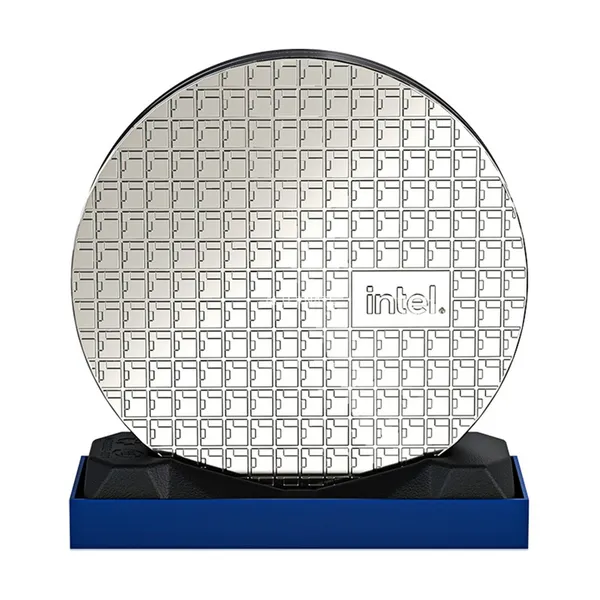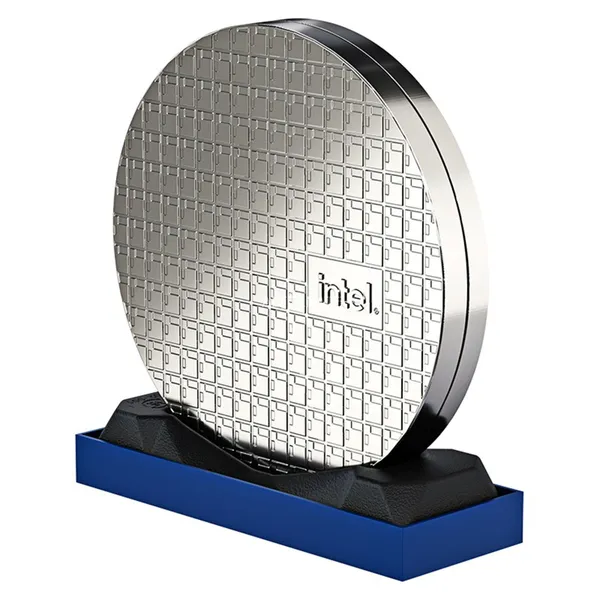Intel Core i9-13900KS 3,2GHz Raptor Lake, 36MB, LGA1700 -suoritin, boxed
Valmistaja: INTEL
ID: BX8071513900KS
56990€
Näytä ALV 0%
Näytä ALV 25,5%
Multitronic Vaasa
Multitronic Pietarsaari
Multitronic Jyväskylä
Multitronic Lappeenranta
Multitronic Maarianhamina
Tärkeimmät tekniset tiedot
Valitse yksi tai useampi ominaisuus etsiäksesi tuotteita, joilla on samat tekniset tiedot.
Tuotetiedot
Kuvaus
Myymäläsaatavuus
Toimitus
Hinnan muutokset
| Tekniset tiedot | |
| OpenCL-versio | 3.0 |
| Tila | Launched |
| Julkaisupäivämäärä | Q1'23 |
| Kohdemarkkina | Gaming, Content Creation |
| Prosessori | |
| Prosessorimalli | i9-13900KS |
| Suoritinvalmistaja | Intel |
| Suoritinperhe | Intel Core i9 |
| Prosessorin kanta | LGA 1700 |
| Kellotus | B0 |
| Pakkaustyyppi | Laatikko |
| Prosessorin ytimet | 24 |
| Prosessorin säikeet | 32 |
| Prosessorin käyttötilat | 64-bittinen |
| Suorittimen boost-taajuus | 6 GHz |
| Prosessorin välimuisti | 36 MB |
| Väylätyyppi | DMI4 |
| Prosessorin koodinimi | Raptor Lake |
| Prosessorin välimuistityyppi | Smart Cache |
| Prosessorin tukema muistin kaistanleveys (maks.) | 89,6 GB/s |
| ARK ID -prosessori | 232167 |
| Jäähdytin sisältyy |  |
| Tehokkuusytimet | 16 |
| Suorituskyky-ytimet | 8 |
| DMI-kaistojen enimmäismäärä | 8 |
| Prosessorin pohjateho | 150 W |
| Enimmäisturboteho | 253 W |
| Tehokkuusytimen pohjataajuus | 2.4 GHz |
| Tehokkuusytimen boost-taajuus | 4,3 GHz |
| Suorituskyky-ytimen pohjataajuus | 3,2 GHz |
| Suorituskyky-ytimen boost-taajuus | 5,4 GHz |
| Prosessorisukupolvi | 13th Gen Intel® Core |
| Muisti | |
| ECC |  |
| Non-ECC |  |
| Muistin taajuuskaista (maks.) | 89,6 GB/s |
| Muistikanavat | Kaksikanava |
| Prosessorin tukema suurin sisäinen muisti | 192 GB |
| Prosessorin tukemat muistityypit | DDR4-SDRAM, DDR5-SDRAM |
| Ympäristöolosuhteet | |
| Tjunction | 100 °C |
| Muut ominaisuudet | |
| Sisäinen enimmäismuisti | 192 GB |
| L2-välimuisti | 32768 KB |
| Graffinen lähtö | eDP 1.4b, DP 1.4a, HDMI 2.1 |
| Grafiikka | |
| Sisältyvän näytönohjaimen malli | Intel UHD Graphics 770 |
| Erillisen näytönohjaimen malli | Ei saatavilla |
| Sisäinen näytönohjain |  |
| Sisäisen näytönohjaimen perustaajuus | 300 MHz |
| Sisäisen näytönohjaimen dynaaminen taajuus (maks.) | 1650 MHz |
| Sisäisen näytönohjaimen tuetut tulot | Embedded DisplayPort (eDP) 1.4b, DisplayPort 1.4a, HDMI 2.1 |
| Sisäisen näytönohjaimen enimmäisresoluutio (DisplayPort) | 7680 x 4320 pikseliä |
| Suoritusyksikköjen lukumäärä | 32 |
| Sisäisen näytönohjaimen tunnus | 0xA780 |
| Sisäisen näytönohjaimen enimmäisresoluutio (eDP - integroitu litteä näyttö) | 5120 x 3200 pikseliä |
| Sisäisen näytönohjaimen virkistystaajuus enimmäisresoluutiolla (eDP - integroitu litteä näyttö) | 120 Hz |
| Sisäisen näytönohjaimen virkistystaajuus enimmäisresoluutiolla (DisplayPort) | 60 Hz |
| Sisäisen näytönohjaimen virkistystaajuus enimmäisresoluutiolla (HDMI) | 60 Hz |
| Tuettujen näyttöjen lukumäärä (sisäinen näytönohjain) | 4 |
| Sisäisen näytönohjaimen enimmäisresoluutio (HDMI) | 4096 x 2160 pikseliä |
| Sisäisen näytönohjaimen DirectX-versio | 12.0 |
| Sisäisen näytönohjaimen OpenGL-versio | 4.5 |
| Erillinen grafiikka-adapteri |  |
| Multi-Format Codec Engines | 2 |
| Suorittimen erityispiirteet | |
| Intel® Hyper-Threading -teknologia (Intel® HT Technology) |  |
| Intel® Turbo Boost -teknologia | 2.0 |
| Intel® Quick Sync Video -teknologia |  |
| Intel® Clear Video HD -teknologia (Intel® CVT HD) |  |
| Intel® AES New Instructions (Intel® AES-NI) |  |
| Enhanced Intel SpeedStep Technology |  |
| Intel® Trusted Execution -teknologia |  |
| Intel® Active Management-teknologia (Intel® AMT) |  |
| Intel® VT-x, jossa Extended Page Tables (EPT) |  |
| Intel® Secure Key |  |
| Intel® 64 |  |
| Intel® Stable Image Platform Program (SIPP) |  |
| Intel® OS Guard |  |
| Intel® Virtualization Technology for Directed I/O (VT-d) |  |
| Intel® Virtualization Technology (VT-x) |  |
| Intel Turbo Boost Max Technology 3.0 |  |
| Intel® Speed Shift -teknologia |  |
| Intel® Boot Guard |  |
| Intel® Thermal Velocity Boost |  |
| Intel® vPro™ -alustakelpoinen |  |
| Mode-based Execute Control (MBE) |  |
| Intel® Deep Learning Boost (Intel® DL Boost) on CPU |  |
| Intel® äänenhallintalaite (VMD) |  |
| Intel® Control-flow Enforcement Technology (CET) -tekniikka |  |
| Intel® Thermal Velocity Boost Frequency -teknologia | 6 GHz |
| Intel® Turbo Boost Max Technology 3.0 -taajuus | 5,8 GHz |
| Intel® Thread Director |  |
| Intel® Gaussian & Neural Accelerator (Intel® GNA) 3.0 |  |
| Intel® Adaptive Boost Technology |  |
| Intel vPro® Enterprise -alustakelpoinen |  |
| Intel® Threat Detection Technology (TDT) |  |
| Intel® Standard Manageability (ISM) |  |
| Intel® One-Click Recovery |  |
| Intel® Hardware Shield -kelpoinen |  |
| Intel® Total Memory Encryption - Multi Key |  |
| Intel® Virtualization Technology with Redirect Protection (VT-rp) |  |
| Intel vPro® Essentials -alustakelpoinen |  |
| Intel® Stable IT Platform Program (SIPP) |  |
| Intel® Remote Platform Erase (RPE) |  |
| Ominaisuudet | |
| Tuetut ohjepaketit | SSE4.1, SSE4.2, AVX 2.0 |
| PCI Express korttipaikan versio | 5.0, 4.0 |
| Execute Disable Bit |  |
| Joutotilat |  |
| Thermal Monitoring -teknologia |  |
| Skaalautuvuus | 1S |
| CPU-kokoonpano (maks.) | 1 |
| Saatavilla olevat upotetut vaihtoehdot |  |
| PCI Express kokoonpanot | 1x16+1x4, 2x8+1x4 |
| PCI Express -väylien enimmäismäärä | 20 |
| Markkinasegmentti | Työpöytä |
| Vientisäännöstelyluokitusnumero (ECCN) | 5A992C |
| Tavaraluokituksen automaattinen seurantajärjestelmä (CCATS) | 740.17B1 |
| Käyttöolosuhteet | PC/Client/Tablet |
| Direct Media Interface (DMI) Revision | 4.0 |
| Logistiikkatiedot | |
| Harmonoidun järjestelmän nimikkeistökoodi (HS) | 8542310001 |
| EAN | 5032037262071 |
| Takuu | 1 vuosi |
Intel® Gaussian & Neural Accelerator
Intel® Gaussian & Neural Accelerator (GNA) is an ultra-low power accelerator block designed to run audio and speed-centric AI workloads. Intel® GNA is designed to run audio based neural networks at ultra-low power, while simultaneously relieving the CPU of this workload.
Intel® Deep Learning Boost (Intel® DL Boost)
A new set of embedded processor technologies designed to accelerate AI deep learning use cases. It extends Intel AVX-512 with a new Vector Neural Network Instruction (VNNI) that significantly increases deep learning inference performance over previous generations.
Intel® Speed Shift Technology
Intel® Speed Shift Technology uses hardware-controlled P-states to deliver dramatically quicker responsiveness with single-threaded, transient (short duration) workloads, such as web browsing, by allowing the processor to more quickly select its best operating frequency and voltage for optimal performance and power efficiency.
Intel® Thermal Velocity Boost
Intel® Thermal Velocity Boost (Intel® TVB) is a feature that opportunistically and automatically increases clock frequency above single-core and multi-core Intel® Turbo Boost Technology frequencies based on how much the processor is operating below its maximum temperature and whether turbo power budget is available. The frequency gain and duration is dependent on the workload, capabilities of the processor and the processor cooling solution.
Intel® Turbo Boost Max Technology 3.0
Intel® Turbo Boost Max Technology 3.0 identifies the best performing core(s) on a processor and provides increased performance on those cores through increasing frequency as needed by taking advantage of power and thermal headroom.
Intel® Turbo Boost Technology
Intel® Turbo Boost Technology dynamically increases the processor's frequency as needed by taking advantage of thermal and power headroom to give you a burst of speed when you need it, and increased energy efficiency when you don’t.
Intel® Hyper-Threading Technology
Intel® Hyper-Threading Technology (Intel® HT Technology) delivers two processing threads per physical core. Highly threaded applications can get more work done in parallel, completing tasks sooner.
Idle States
Idle States (C-states) are used to save power when the processor is idle. C0 is the operational state, meaning that the CPU is doing useful work. C1 is the first idle state, C2 the second, and so on, where more power saving actions are taken for numerically higher C-states.
Enhanced Intel SpeedStep® Technology
Enhanced Intel SpeedStep® Technology is an advanced means of enabling high performance while meeting the power-conservation needs of mobile systems. Conventional Intel SpeedStep® Technology switches both voltage and frequency in tandem between high and low levels in response to processor load. Enhanced Intel SpeedStep® Technology builds upon that architecture using design strategies such as Separation between Voltage and Frequency Changes, and Clock Partitioning and Recovery.
Thermal Monitoring Technologies
Thermal Monitoring Technologies protect the processor package and the system from thermal failure through several thermal management features. An on-die Digital Thermal Sensor (DTS) detects the core's temperature, and the thermal management features reduce package power consumption and thereby temperature when required in order to remain within normal operating limits.
Intel® Volume Management Device (VMD)
Intel® Volume Management Device (VMD) provides a common, robust method of hot plug and LED management for NVMe-based solid state drives.
Intel® Gaussian & Neural Accelerator (GNA) is an ultra-low power accelerator block designed to run audio and speed-centric AI workloads. Intel® GNA is designed to run audio based neural networks at ultra-low power, while simultaneously relieving the CPU of this workload.
Intel® Deep Learning Boost (Intel® DL Boost)
A new set of embedded processor technologies designed to accelerate AI deep learning use cases. It extends Intel AVX-512 with a new Vector Neural Network Instruction (VNNI) that significantly increases deep learning inference performance over previous generations.
Intel® Speed Shift Technology
Intel® Speed Shift Technology uses hardware-controlled P-states to deliver dramatically quicker responsiveness with single-threaded, transient (short duration) workloads, such as web browsing, by allowing the processor to more quickly select its best operating frequency and voltage for optimal performance and power efficiency.
Intel® Thermal Velocity Boost
Intel® Thermal Velocity Boost (Intel® TVB) is a feature that opportunistically and automatically increases clock frequency above single-core and multi-core Intel® Turbo Boost Technology frequencies based on how much the processor is operating below its maximum temperature and whether turbo power budget is available. The frequency gain and duration is dependent on the workload, capabilities of the processor and the processor cooling solution.
Intel® Turbo Boost Max Technology 3.0
Intel® Turbo Boost Max Technology 3.0 identifies the best performing core(s) on a processor and provides increased performance on those cores through increasing frequency as needed by taking advantage of power and thermal headroom.
Intel® Turbo Boost Technology
Intel® Turbo Boost Technology dynamically increases the processor's frequency as needed by taking advantage of thermal and power headroom to give you a burst of speed when you need it, and increased energy efficiency when you don’t.
Intel® Hyper-Threading Technology
Intel® Hyper-Threading Technology (Intel® HT Technology) delivers two processing threads per physical core. Highly threaded applications can get more work done in parallel, completing tasks sooner.
Idle States
Idle States (C-states) are used to save power when the processor is idle. C0 is the operational state, meaning that the CPU is doing useful work. C1 is the first idle state, C2 the second, and so on, where more power saving actions are taken for numerically higher C-states.
Enhanced Intel SpeedStep® Technology
Enhanced Intel SpeedStep® Technology is an advanced means of enabling high performance while meeting the power-conservation needs of mobile systems. Conventional Intel SpeedStep® Technology switches both voltage and frequency in tandem between high and low levels in response to processor load. Enhanced Intel SpeedStep® Technology builds upon that architecture using design strategies such as Separation between Voltage and Frequency Changes, and Clock Partitioning and Recovery.
Thermal Monitoring Technologies
Thermal Monitoring Technologies protect the processor package and the system from thermal failure through several thermal management features. An on-die Digital Thermal Sensor (DTS) detects the core's temperature, and the thermal management features reduce package power consumption and thereby temperature when required in order to remain within normal operating limits.
Intel® Volume Management Device (VMD)
Intel® Volume Management Device (VMD) provides a common, robust method of hot plug and LED management for NVMe-based solid state drives.
Multitronic Vaasa: 0 kpl
Arvioitu toimitus: 02.01. - 06.01.
Arvioitu toimitus: 02.01. - 06.01.
Tänään: Suljettu (Joulupäivä)
Multitronic Pietarsaari: 0 kpl
Arvioitu toimitus: 02.01. - 06.01.
Arvioitu toimitus: 02.01. - 06.01.
Tänään: Suljettu (Joulupäivä)
Multitronic Jyväskylä: 0 kpl
Arvioitu toimitus: 02.01. - 06.01.
Arvioitu toimitus: 02.01. - 06.01.
Tänään: Suljettu (Joulupäivä)
Multitronic Lappeenranta: 0 kpl
Arvioitu toimitus: 02.01. - 06.01.
Arvioitu toimitus: 02.01. - 06.01.
Tänään: Suljettu
Multitronic Maarianhamina: 0 kpl
Arvioitu toimitus: 02.01. - 06.01.
Arvioitu toimitus: 02.01. - 06.01.
Tänään: Suljettu (Joulupäivä)
Nouto myymälästä
Arvioitu toimitusaika: 02.01. - 06.01.
Arvioitu toimitusaika: 02.01. - 06.01.
Matkahuolto: Pakettiautomaatit ja noutopisteet
Arvioitu toimitusaika: 03.01. - 06.01.
Arvioitu toimitusaika: 03.01. - 06.01.
Posti: Pakettiautomaatit ja noutopisteet
Arvioitu toimitusaika: 02.01. - 05.01.
Arvioitu toimitusaika: 02.01. - 05.01.
Posti: Postipaketti
Arvioitu toimitusaika: 03.01. - 06.01.
Arvioitu toimitusaika: 03.01. - 06.01.
Posti: Ovelle-paketti
Arvioitu toimitusaika: 03.01. - 05.01.
Arvioitu toimitusaika: 03.01. - 05.01.
Matkahuolto: Jakopaketti
Arvioitu toimitusaika: 02.01. - 06.01.
Arvioitu toimitusaika: 02.01. - 06.01.
Matkahuolto: Kotijakelu
Arvioitu toimitusaika: 02.01. - 06.01.
Arvioitu toimitusaika: 02.01. - 06.01.
Posti: Kotipaketti
Arvioitu toimitusaika: 03.01. - 05.01.
Arvioitu toimitusaika: 03.01. - 05.01.
Edellä mainitut tekniset tiedot ovat vain viitteellisiä, ja ne voivat muuttua ilman ennakkoilmoitusta. Pidätämme oikeuden korjata virheet ja käyttää kuvia ohjeellisina. Teksti voi sisältää automaattisesti luotuja tai koneellisesti käännettyjä osia, mikä saattaa aiheuttaa epätarkkuuksia.


